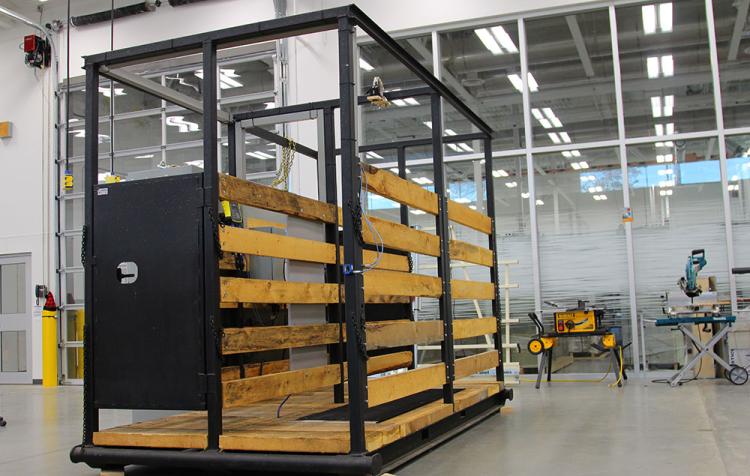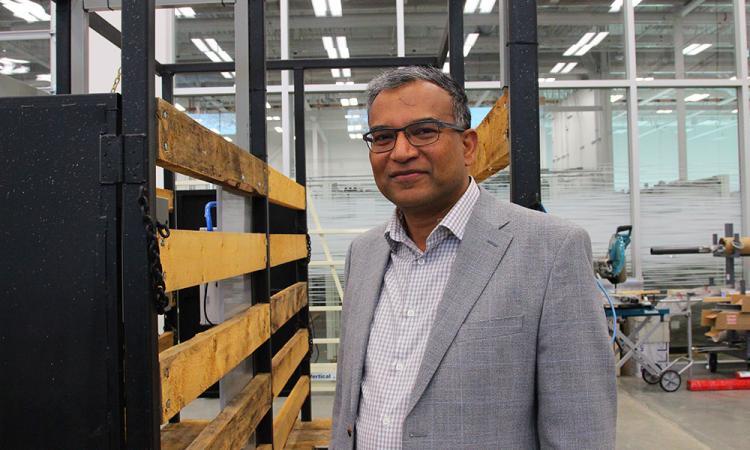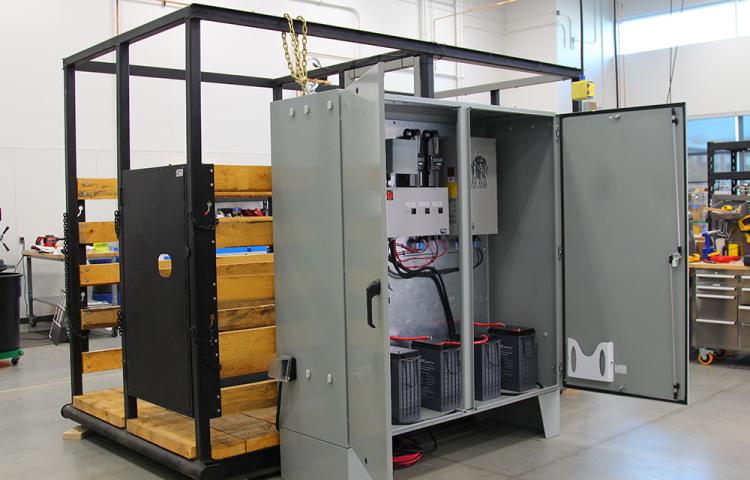Bison, as a matter of best practice, are beasts best avoided. While the average mature cow weighs about 1,100 pounds, a bison bull approaches 2,000. Despite that mass, they're fast, clocking in at nearly 50 kph when motivated. Caution and respect - at a distance - are key.
Just the same, bison are big business in Alberta. The province is home to almost half of Canada's bison farms, and hosts 44% of the total massive, woolly headcount. With healthy animals and growing demand for the lean, nutritious meat, the venture can be profitable.
But how do you ensure the health and growth of an animal that you shouldn't get too close to, and that will likely avoid you anyway, by wandering the far reaches of the range? The answer may lie in novel technology that has emerged from a partnership between Lakeland College and the applied research Centre for Sensors and System Integration at NAIT.
"This is perhaps the very first time that we are designing a system where we can monitor the health condition of a bison herd from a remote location," says Dr. Quamrul Huda, JR Shaw Applied Research Chair in Industrial Automation and principal investigator in the project.
Ultimately, that care from afar could mean a safer industry and more productive farms.
How does NAIT applied research on sensors and data collection help industry?
Better data = better animals
Dr. Yuri Montanholi, research scientist and instructor at Lakeland College, calls the invention BisonSense, and sees it filling a major challenge in the industry: data collection.
Currently, bison are monitored only for weight, says Montanholi. Animals are measured once when they are weaned as calves and once again upon shipping for slaughter (before they turn two years old).
"The collection of only two weight records [over] the life of the animals provides limited information [about] their performance," Montanholi adds. This affects a rancher's ability to make informed decisions about the welfare and progress of an animal.
Developed between August 2022 and November 2023 with funding from Alberta Innovates, and first deployed for testing in June, BisonSense offers a boost. The device resides in the field, designed to withstand the extremes of Alberta's weather, and powered by solar and wind. It includes a scale over which animals may walk several times a day, and is equipped with sensors to monitor fat and muscle development, and spot fever or inflammation.
BisonSense even has a weather station to detect correlations between animal growth and behaviour and climate conditions.
All of that information, collected non-invasively, may benefit ranchers like Justin Dorey. For a decade, he and his wife Shaelyn have managed some 800 head a year over 3,000 acres at Irish Creek Bison, roughly two hours east of Edmonton and near Lakeland. As part of an ongoing relationship with the college's bison program, Dorey will put BisonSense to work in the coming months.


"With this system we should be handling animals half as much," he says. "Any time you're handling them you're disrupting them. Any time they have any amount of stress they won't gain as much that day or the following days until they settle down. It disrupts their eating patterns."
Another benefit of remote sensing is less effort needing to be spent on corralling animals for measurements that inform decisions about their processing.
"Hopefully it's going to save us time and make us as efficient as possible," says Dorey.
He foresees a similar impact for other participants in an industry that's on the rise. Recovering from a dip early in the pandemic, the value of Canadian exports of live bison peaked at $11.8 million in April. BisonSense may prove useful in fostering growth for a unique agricultural product that is exported around the world.
"It would give [producers] an idea on where they can improve on things like water and feed," says Dorey, "and make sure everyone is doing the best they can for their animals - and that their animals are performing as best they can."
"Huge value" for the industry

Dr. Quamrul Huda, JR Shaw Applied Research Chair in Industrial Automation at NAIT
BisonSense wouldn't exist if not for a post-secondary collaboration in which researchers from different institutes complemented each other's areas of expertise.
"While we have the skills to manage the animals and respond to the industry needs we are short in skills to identify the specific devices, proper powering systems and a list of items related to system integration and deployment," says Montanholi.
"The technical support of NAIT on these matters was crucial to the success of our BisonSense."
Huda describes the project, which could be applied to other livestock, as an example of "classic applied research," or the development of solutions to address real industry challenges. Remote sensors won't replace the keen eyes and experience of ranchers but it may make their jobs easier.

"That brings huge value to the industry," says Huda.
As he continues with testing, Montanholi knows the partnership has already led to progress that will ultimately serve him in supporting Canada's bison industry. While other remote monitoring technologies exist, nothing is as comprehensive in its capacity for gathering and sharing data that will make a difference in day-to-day operations for ranchers.
"BisonSense represents many steps forward," says Montanholi.
This story was originally featured in techlifetoday, click here to read the full article.













